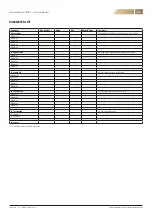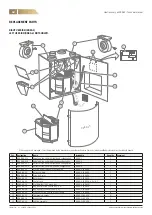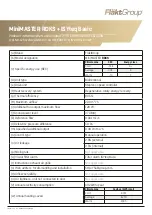
Heat recovery unit RDKS - Technical manual
25
FläktGroup DC_9295GB_20190326_R5
We reserve the right to make changes without prior notice
Wrongly adjusted air flows may result in increased
energy consumption and damage to the building.
INTRODUCTION
Adjustment of air flow and temperature may only be carried out by an
installation engineer or service personnel. During adjustment, use the
ISYteq Touch 3.5 control panel (accessory).
AIRFLOW ADJUSTMENT
The speed of the fans is adjusted independently of each other.
The picture shows an RDKS-1 unit.
AIRFLOW CALCULATION
The unit is equipped with four measurement points as per figure 16
above. Measuring the pressure difference,
D
p
m
in Pa over the impeller
gives the total supply air and extract air flows. The air flow q in l/s is
determined using the following formula:
q = 0.73 x
D
p
m
where
D
p
m
= measured pressure in point T – measured pressure in
point U
or:
where
D
p
m
= measured pressure in point F – measured pressure in
point A
PLANNING ADVICE
In a rotary heat exchanger it is not possible to completely eliminate
leakage between supply air and extract air. Air leakage at the seals is
minimised by keeping the pressure difference between the supply air
and extract air ducts as small as possible.
Also check the pressure balance between supply air and extract air.
Lower pressure on the supply air side can result in the transfer of
moisture and odour. This is especially important if Forced mode is
used.
The pressure at point T should be higher than at point F.
The pressure at point U should be higher than at point A.
F
T
A
U
T
F
U
A
ADJUSTMENT
NOTE! Flow deviations of up to 25% may occur when
this measurement method is used on a unit with a
rotary heat exchanger.
The measured flow values should only be regarded as
indicative. Always perform control measurement in the
supply and extract air devices.
The picture shows an RDKS-2 unit.
T = Supply air F = Extract air
U = Outdoor air A = Exhaust air
















































